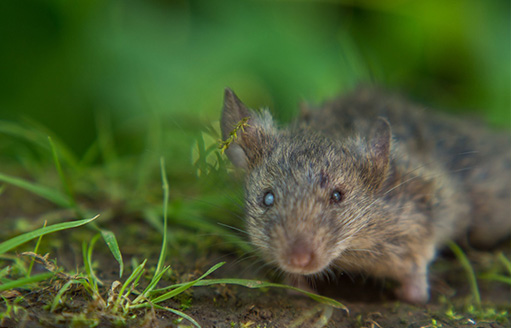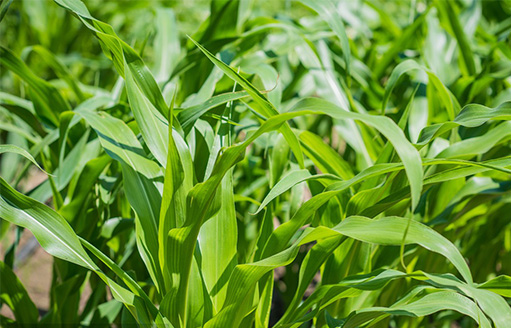At present, the main producing areas have entered the flowering and milk ripening stage, the middle rice is in the booting and heading stage, and the soybean is about to enter the flowering and pod stage, which is the key period of production formation and the window period of "one spray and more promotion", but the harvest of autumn grain is still faced with flood, high temperature, drought, cold damage and disease and insects and other disasters. In the middle and late period of autumn grain growth, the mixed spraying of foliar fertilizer, regulator, anti-stress agent, insecticide and fungicide can achieve multiple effects such as promoting growth and development, promoting grouting maturity, promoting post-disaster recovery, and promoting production increase, which is the key measure for disaster prevention and non-disaster production increase in the middle and late period of autumn grain. Adhere to the principle of "classifying policies, selecting fertilizer drugs, precise spraying, and ensuring safety", promote the implementation of "one spray and more promotion", and make every effort to consolidate the foundation for a bumper harvest of autumn grain.
(1)Adopt policies according to local conditions.In Northeast China, spring corn is at flowering and milk-ripening stage, spring soybean is at flowering and podding stage, and middle rice is at booting and heading stage. We should pay more attention to such disasters as waterlogging, low temperature and cold damage, early frost and other diseases and pests as corn borer, double-spotted hotartaria, big spot disease, soybean sclerotinia, food worm, rice blast, sheath rot, rice stalk disease, diborer, rice bug and so on. Summer corn is about to enter the flowering period and summer soybean is about to enter the flowering and podding period in the Huang-Huai-hai area. Attention should be paid to waterlogging in the north and high temperature in the south, as well as diseases and insect pests such as southern corn rust, brown spot, corn borer, grass armyworm, beet moth, cotton bollworm, soybean downy mildew and bean pod borer. In the middle and lower reaches of the Yangtze River, rice is at the booting and heading stage, so we should pay more attention to natural disasters such as high temperature, drought, flood, cold dew and wind, as well as diseases and insect pests such as sheath blight, rice stalk, rice blast, diborer, rice leaf roller and rice planthopper. In Northwest China, spring corn is in the stage of flowering, spring soybean is in the stage of podding, summer soybean is in the stage of flowering and podding, so we should pay attention to drought and early frost, as well as the diseases and pests such as Hotartaria bifaculata, leaf mites, soybean food worms, pod borer, downy mildew and so on. It is necessary to comprehensively implement "one spray and more promotion" according to the growth process of corn and soybeans, diseases and pests, and natural disasters in different regions.
(2)Preferably fertilizer medicine, scientific collocation.In response to natural disasters, potassium dihydrogen phosphate, water-soluble fertilizer of medium and trace elements and anti-drought and stress preparations can be sprayed in hot and arid areas, urea and potassium dihydrogen phosphate can be sprayed on the leaf surface after timely drainage of waterlogging plots, and phospho-potassium fertilizer or liquid film can be sprayed in areas threatened by early frost. Triacanol, thiabenolide, brassinolide and indole butyric acid were selected as growth regulators for maize, triacanol, brassinolide and indole butyric acid were selected as growth regulators for soybean, and brassinolide, thiabenolide, red indole brassica and 14 were selected as growth regulators for rice-Hydroxynon-thiaphenone, calcium modulated cyclate, etc. To deal with diseases and pests, corn fungicides can be selected pyrazolium, phenyloxazole, pyrazolium · pentazolium, phenyloxyl · flucyclozole, etc., insecticides can be selected chlorfenamide, abamectin benzoate, deltamethrin, cyhalothrin, etc.; Soybean fungicides can be selected pyrazolium, pyrimidin, Pyrazolium · Flucyclozole, benzoyl · propionazole, etc. Insecticides are mainly selected chlorfenamide, deltamethrin, cyhalothrin, metrevir · Chlorpyrifos, etc. Rice fungicides can be selected tricyclic azole, pyrazolium microcapsule suspension, thiafuramide, pyristoxil, oximidin and pentazolol, etc. The main insecticides are trifluoropyrimidine, tetrachloramide, indocarb, ethyl multicidin, etc.
(3)Timely spray, accurate dosage.In terms of time, the wind should be within the third level and the temperature should not exceed 30 ° C. Generally, it is chosen before 9 am and after 4 PM without rainy days to avoid the high temperature period at noon. If there is heavy rain within 24 hours after spraying, re-spray in time; Drones can be selected for night operation according to local conditions. In terms of dosage, when the UAV is used, the spray volume per mu is more than 1.5 liters, and the appropriate amount of spray additives is added to the liquid to improve the performance of droplet settlement, anti-drift and anti-evaporation. When the high gap spray rod sprayer and truck stretcher machine are used for spraying, the amount of spray liquid should reach more than 30 liters per acre.
(4)Unified operation to ensure safety.Notice in advance in accordance with relevant laws and regulations before operation, and set up warning signs during operation to prevent human and animal poisoning and casualties. Priority should be given to the unified spray control operation of UAV, the flight speed should be controlled at 3-5 m/s, and the flight height should be adjusted according to the carrying weight of UAV, the flying height of UAV with a load of less than 30 liters is 2-3 m away from the crop canopy, and the flying height of UAV with a load of more than 30 liters is 3.5-4.5 m away from the crop canopy to prevent the stem from blowing off during operation. When the UAV takes off and lands, it should stay away from obstacles and personnel, the operators should wear necessary protective equipment, avoid the downwind position of the spray, and it is forbidden to walk through the application area. Smoking and eating are prohibited during operation. For the fields not suitable for UAV operation, the high gap spray rod sprayer and vehicle-borne stretcher machine can be used to spray according to local conditions. Before spraying, the potential risks should be evaluated comprehensively to prevent the drift of spray droplets from causing non-target biological toxicity and pesticide damage to surrounding crops. Small-scale tests should be carried out before large-scale application.







